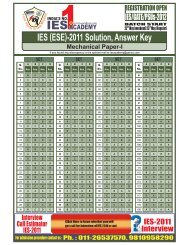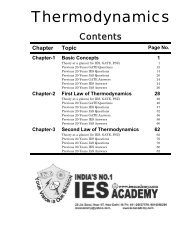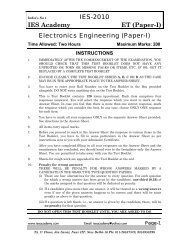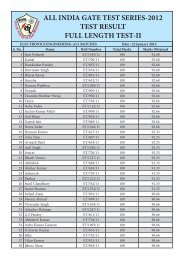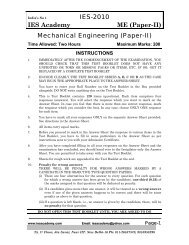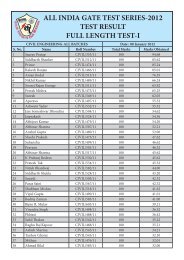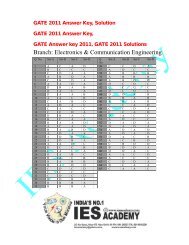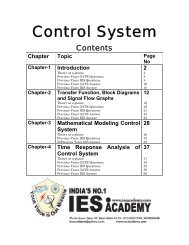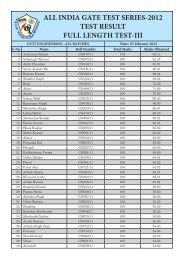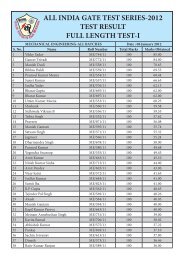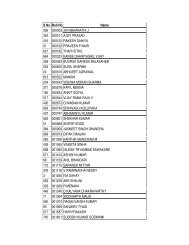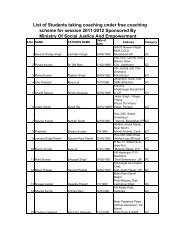Electrical Machine - IES Academy
Electrical Machine - IES Academy
Electrical Machine - IES Academy
Create successful ePaper yourself
Turn your PDF publications into a flip-book with our unique Google optimized e-Paper software.
1. Transformer<br />
Theory at a Glance (For <strong>IES</strong>, GATE, PSU)<br />
Introduction<br />
The transformer is a static electromagnetic device, which transfers electrical energy from one<br />
electrical circuit to another electrical circuit through the medium of magnetic field (magnetic<br />
coupling) and without a change in the frequency. The two circuits are not connected<br />
electrically, but coupled magnetically and electromagnetic energy conversion takes place.<br />
Since a transformer has no moving part, it has maximum efficiency of all machines. Important<br />
applications of a transformer are:<br />
1. For changing voltage and current levels from one circuit to another.<br />
2. For impedance matching of a source and its load for maximum power transfer in<br />
electronic and control circuits.<br />
3. For isolating DC while permitting flow of AC between two circuits or for isolation.<br />
Main Application<br />
Voltage generation is limited to 11kV due to insulation limits, but transmission of electrical<br />
power is more economical at higher voltage. So the most important application of power<br />
transformer is to step-up & step-down the voltage of the transmission lines.<br />
Transformer Construction<br />
Based on the manner in which the windings are wound around the magnetic core, the<br />
transformers are of two types: (i) core type and (ii) shell type<br />
(a)<br />
(b)<br />
Constructional details of single-phase (a) core-type transformer (b) shell-type transformer<br />
www.iesacademy.com E-mail: iesacademy@yahoo.com Page-1<br />
25, 1 st Floor, Jia Sarai, Near IIT. New Delhi-16 Ph: 011-26537570, 9810958290



